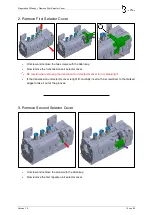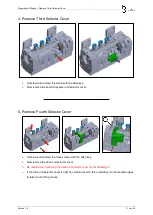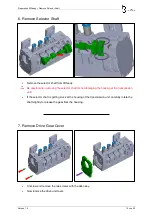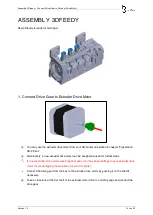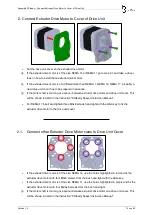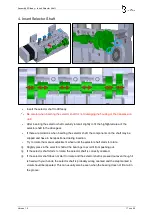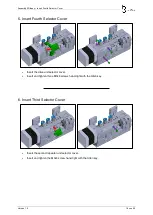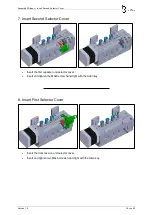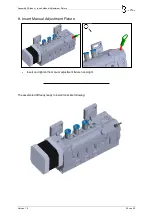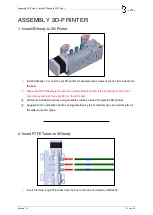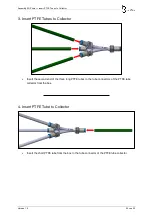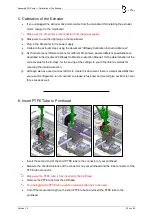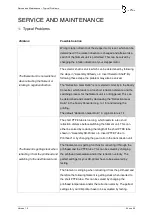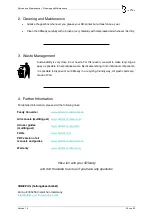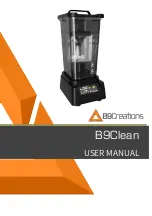
Service and Maintenance » Typical Problems
Version 1.0
24 von 25
SERVICE AND MAINTENANCE
1.
Typical Problems
Problem
Possible Solution
The filament unit is not switched
when retracting the filament or
rotating in negative direction.
Wrong rotation direction of the stepper motor is set, which can be
determined, if the rotation direction is changed and afterwards a
switch of the filament unit is performed. This can be solved by
changing the rotation direction of your stepper motor.
The selector shaft is stuck, which can be determined by following
the steps in “Assembly 3Dfeedy > 4. Insert Selector Shaft”. By
following these steps, the problem may also be solved.
The “Retraction Gear Ratio” is not selected correctly in the Feedy
Converter, which leads to a too short retraction distance and the
switching process for the filament unit is not triggered. This can
be determined and solved by decreasing the “Retraction Gear
Ratio” in the Feedy Converter (e.g. to 1:5) and redoing the
printing.
The default “Retraction Gear Ratio” in original state is 1:4.
The filament is getting stuck when
retracting it from the printhead and
switching to the next filament unit.
The short PTFE tube is too long, which leads to a too short
retraction distance before switching the filament unit. This can
either be solved by reducing the length of the short PTFE tube
shown in “Assembly 3D-Printer > 6. Insert PTFE Tube to
Printhead” or by changing the gear ratio in the transmission unit.
The filament end is getting too thick for retracting it through the
printhead and the PTFE tube. This can be solved by changing
the printhead temperature and/or the retraction velocity. The
perfect settings for your 3D-printer have to be evaluated by
testing.
The filament is stringing when retracting it from the printhead and
therefore the following filament is getting stuck when inserted to
the short PTFE tube. This can be solved by changing the
printhead temperature and/or the retraction velocity. The perfect
settings for your 3D-printer have to be evaluated by testing.

